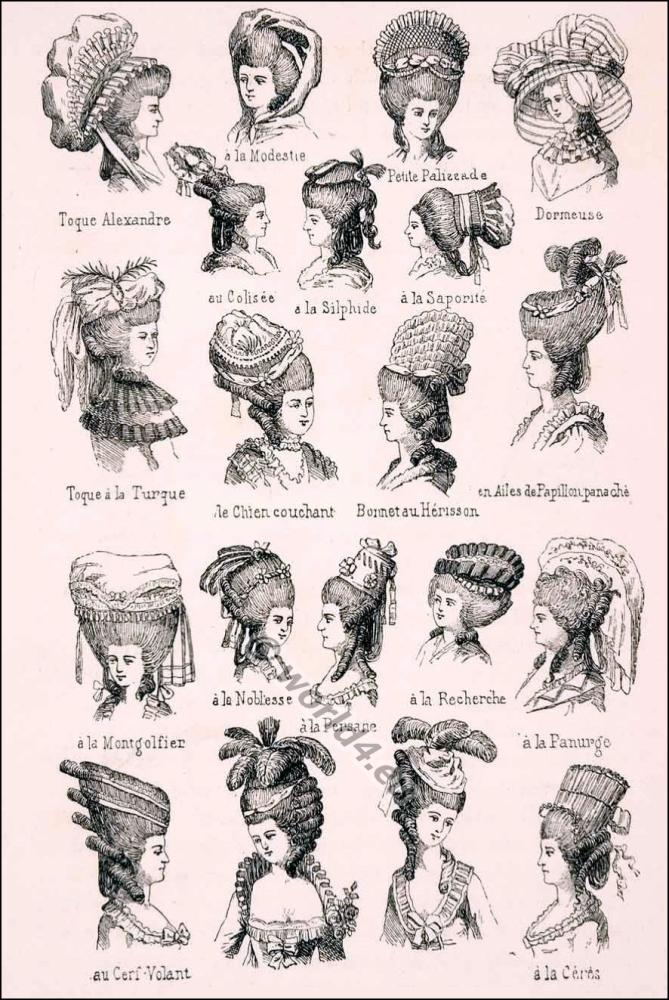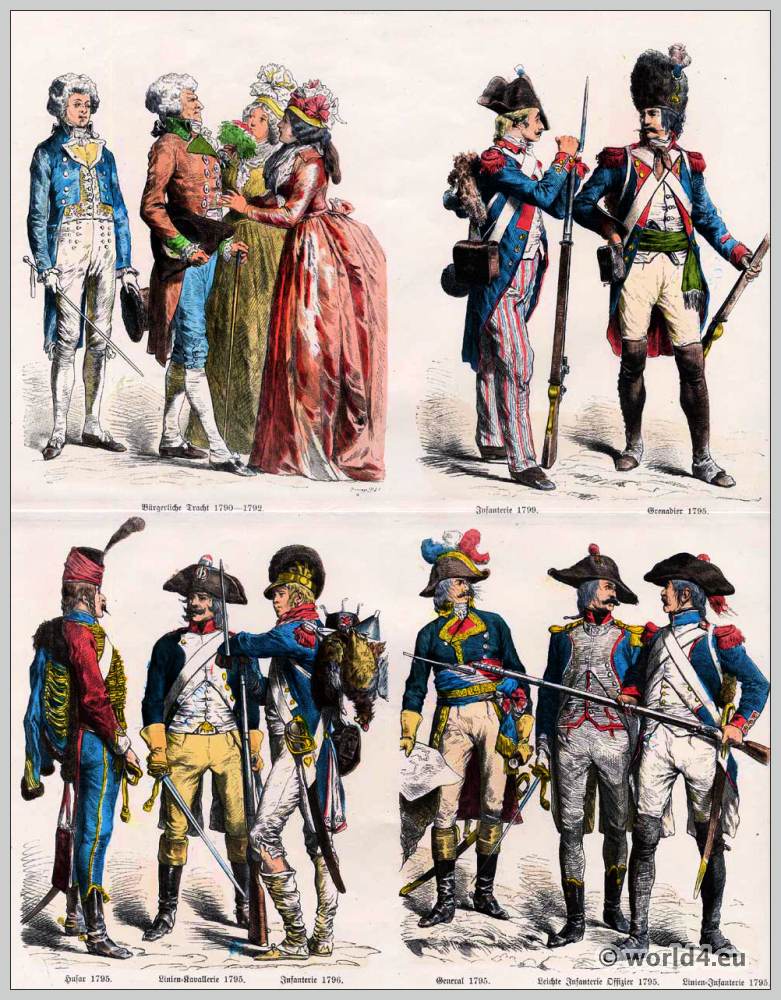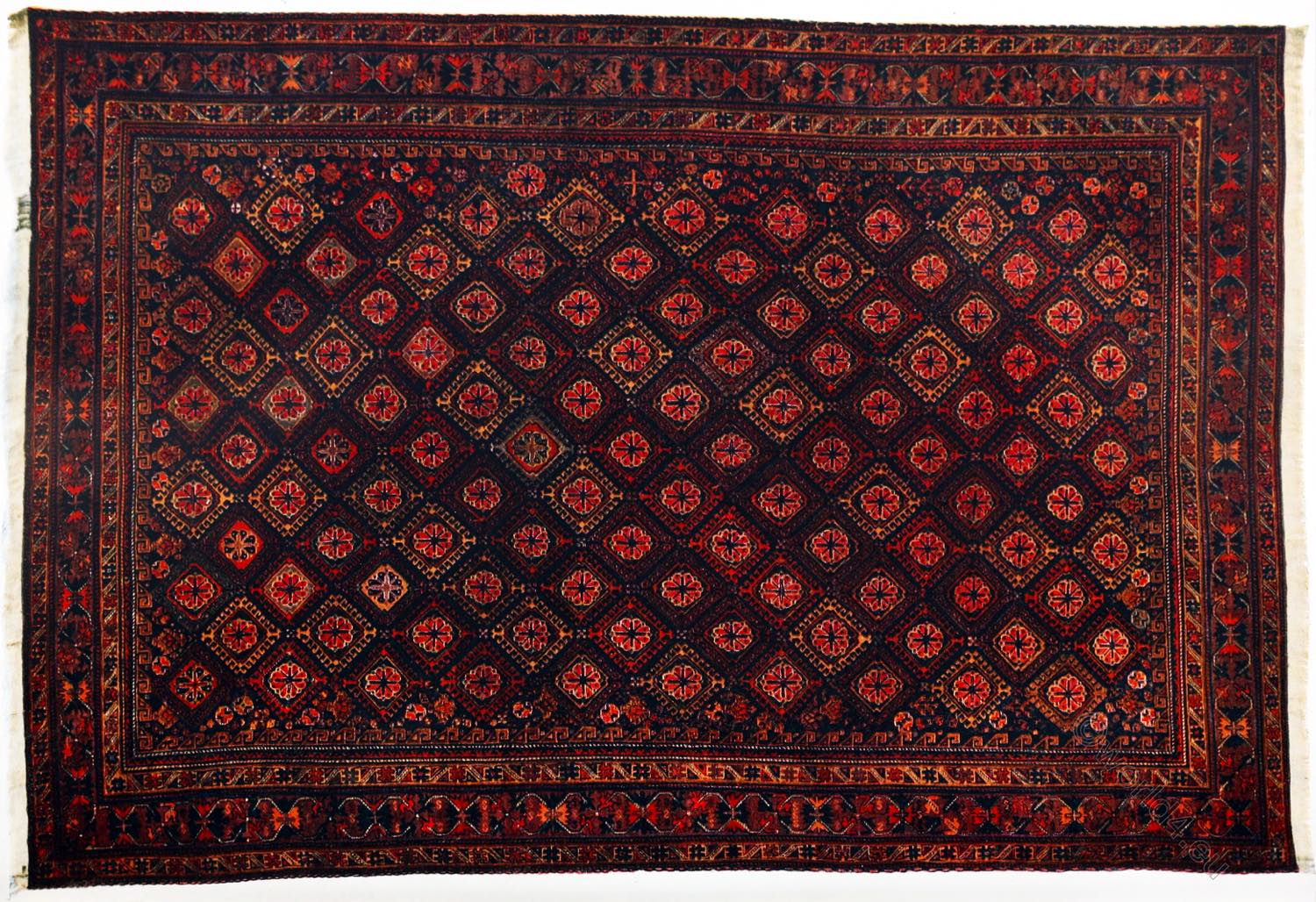Ghiordes (Asia Minor) Rug.
6ft. 8in. X 4ft.
It contains 160 knots to the square inch, and is woven of wool and cotton, a peculiarity of this old make. One of the most highly prized by collectors.
Turkish carpets are characterised in general by boldness of pattern rather than by the refinement of design which distinguishes The classic Persian weaves. As a rule, the Turkish pattern is angular or geometric in character. Animal and human forms are rare, but conventionalised floral motives — and even fairly realistic renderings of the tulip, hyacinth, pink, and other flowers found on the so-called “Rhodian” and “Damascus” faience of the period — are of frequent occurrence. The colouring of the old rugs is generally rather bright and full-hued, with vigorous contrasts of scarlet and yellow or of red and blue, although in some of the later fabrics, such as the Ghiordes, more delicate colors and lighter effects were sought.
The Ghiordes knot (Turkish: Gördes düğümü) or Turkish knot is one of the two most commonly used knots in knotted carpets, typical of Turkish and Persian carpets.
There are two kinds of knots: one is called the Ghiordes or Turkish knot; the other, the Senneh or Persian knot. The Ghiordes knot (Turkish: Gördes düğümü) or Turkish knot is one of the two most commonly used knots in knotted carpets, typical of Turkish and Persian carpets. In the Ghiordes knot the two free ends of the yarn come out between the pair of warp-threads, across and in front of which the yarn has been passed. In the case of the Senneh knot, the yarn completely encircles one warp-thread of a pair but is passed under the second so that only one yarn-end emerges between the pair of warp-threads, the other coming to the front outside.
Wool is the principal material for knotting; silk occasionally is used; and gold and silver threads are sometimes woven (not knotted) in the fabric to give greater richness of effect. The warp-threads may be of cotton, wool, or silk. The colours of the old rugs are few in number and limited in shades. Red, blue, green, yellow, black, and white, and occasionally violet, are the principal colours. The old dyes, although happily far from “standardised” have a beauty and a permanency rarely attained in modern productions.
The dating of early rugs is a matter of much uncertainty; but a small number of rugs may surely be assigned to the fifteenth century, and for a few exceptional pieces, dates even as early as the thirteenth and fourteenth centuries are claimed. It is not until the sixteenth century that we find the certain evidence of a date wrought into the carpet itself; our reference is to the famous Ardabil carpet, which bears the date 946 of the Hegira (A. D. 1540).
Source:
- Oriental carpets by Oriental Carpet Manufacturers Ltd, 1900.
- The practical book of oriental rugs by Lewis George Griffin. Philadelphia, London, J.B. Lippincott Company, c. 1920.







